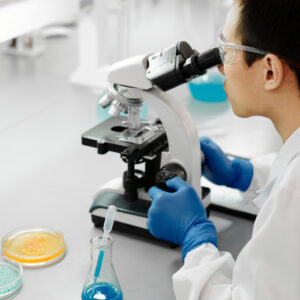Pseudomonas Aeruginosa Waterborne Pathogen Testing
 Pseudomonas are a type of bacteria found commonly in the environments including soil and water. Pseudomonas can survive municipal water treatment at low levels, growing to more dangerous levels once present in buildings, healthcare facilities, long term care facilities, as well as showers, sinks, fountains, and other areas where water can splash or mist. The presence of Pseudomonas is not obvious to the casual viewer but can be detected through waterborne pathogen testing.
Pseudomonas are a type of bacteria found commonly in the environments including soil and water. Pseudomonas can survive municipal water treatment at low levels, growing to more dangerous levels once present in buildings, healthcare facilities, long term care facilities, as well as showers, sinks, fountains, and other areas where water can splash or mist. The presence of Pseudomonas is not obvious to the casual viewer but can be detected through waterborne pathogen testing.
The risk factors for the growth of Pseudomonas are similar to Legionella and include stagnant water, long or complex plumbing systems, warm temperatures, and other factors that are best assessed and tested for by a waterborne pathogens testing consultant.
Of the different types of Pseudomonas, the one that most often causes human infections is Pseudomonas aeruginosa. This type can cause infections in the blood, lungs (resulting in pneumonia), or other parts of the body after surgery. It is a gram-negative opportunistic pathogen that can often be found through pathogen testing in the above-mentioned areas, as well as hot tubs and pools.
Pseudomonas aeruginosa infections in individuals with immunosuppressive or chronic conditions are difficult to treat because of their antibiotic resistance and the pathogen’s tendency to form multicellular biofilms which allow for survival and replication within human tissues and medical devices. Antibiotic resistance occurs when the germs no longer respond to the antibiotics designed to kill them. According to the CDC, these bacteria are constantly finding new ways to avoid the effects of the antibiotics used to treat the infections they cause.
Drug-resistant Pseudomonas aeruginosa caused an estimated 32,600 infections among patients in hospitals and 2,700 estimated deaths in the U.S. in a recent year, making this a significant risk for healthcare facilities and public facilities that are visited by those with weak immune systems.
The CDC states that healthcare facilities should have water management plans that help ensure water quality and reduce the risk of exposure to potentially harmful germs like Pseudomonas aeruginosa. Water treatment options may include both point of entry (POE) water treatment utilizing chemicals or filters and point of use (POU) water treatment including filtration.
Pseudomonas aeruginosa is a dangerous opportunistic waterborne pathogen that merits the attention of facility managers. In particular, managers of healthcare facilities such as hospitals and nursing homes, as well as larger facilities with complex plumbing systems including hotels, spas, resorts, and factories should have a water management plan to test for and remediate pathogens such as Pseudomonas aeruginosa.
Contact Legionella Control Systems to learn how you can test for Pseudomonas aeruginosa and other pathogens that pose a threat to your staff and visitors. If time is of the essence for your Pseudomonas testing, ask about our same day qPCR testing. Also, ask about our free water testing for basic water characteristics including ORP.







